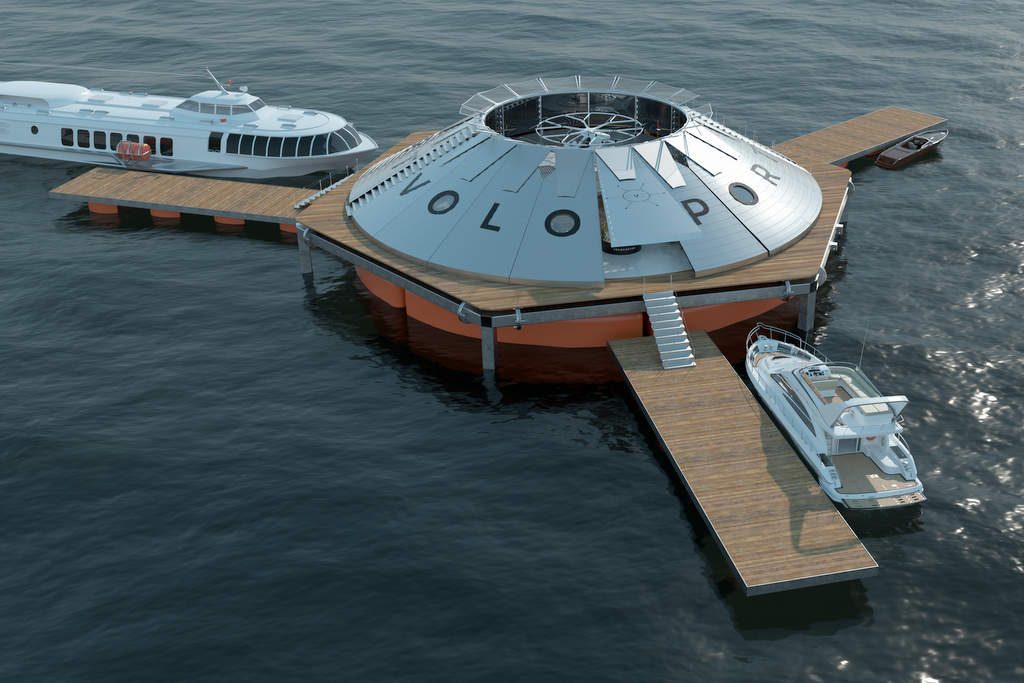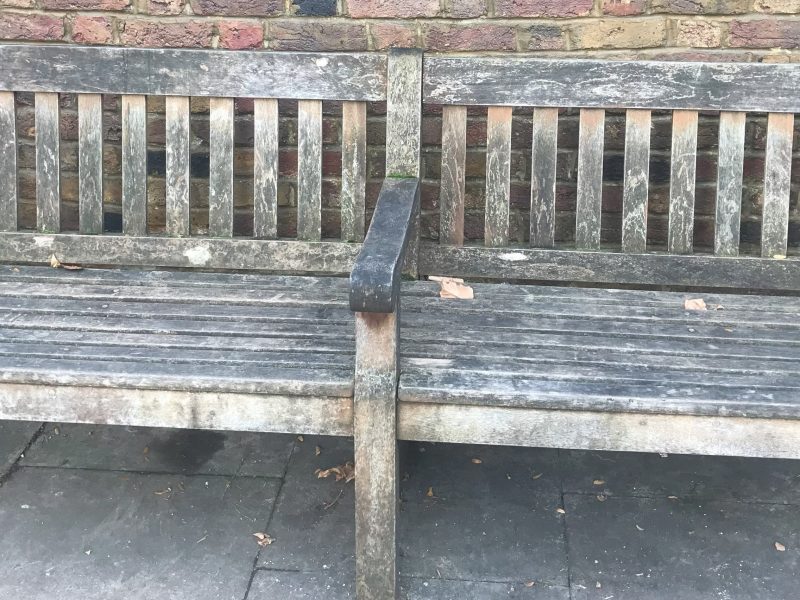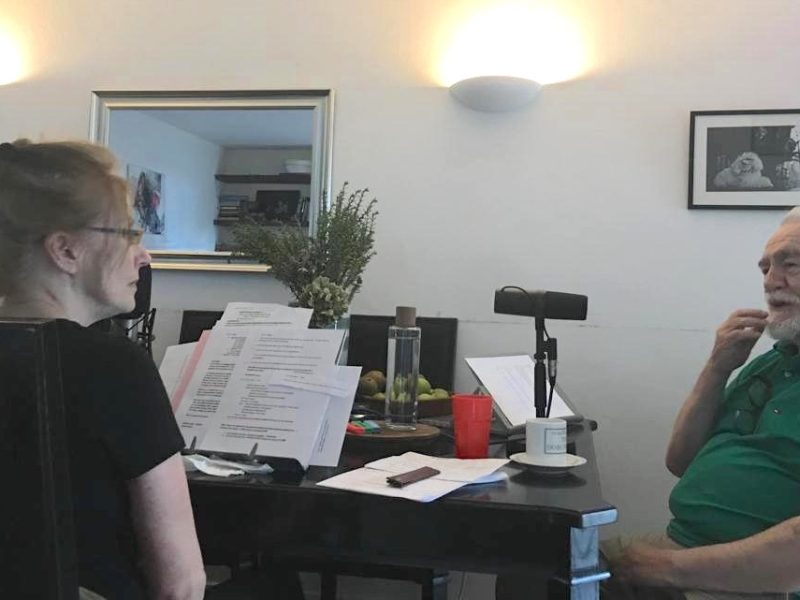By Ylwa Warghusen.
I must admit I am a little intimidated as I prepare to interview local architect Ricky Sandhu for On The Hill. A quick Google search reveals something of a wunderkind: a stellar career at Foster + Partners and numerous astonishing, futuristic-looking projects. In 2014 Sandhu founded small. (six miles across london limited), a design and architectural consultancy with offices in a sleek co-working hub in Fitzrovia. It is an apt setting for the architect: a community of young creatives in a cool, industrial-style space.
In person, Sandhu is fast-talking, articulate and a veritable fountain of ideas. He is also a dedicated family man with wife Andrea (co-founder of small.) and two young children. The architect grew up in Birmingham and discovered Primrose Hill whilst studying architecture at UCL. He’s been a local resident ever since. “It’s the only place I wanted to live,” he says, mentioning The Engineer as a favourite hang-out.
Sandhu describes what he does as “innovation in the built environment”. During his fifteen-year tenure at Foster + Partners he led ground-breaking projects such as the Slussen development in Stockholm, which inspired him to keep going further. “I wanted to do something different with each project, not just another building.” Hence his belief that “good design can improve the quality of life – for everyone”. He continues, “Architects usually only focus on their site. I wanted to go beyond the site boundary, and tackle the space between the buildings.” He does this by drawing on a broad range of expertise to solve urban planning issues while promoting the environment. “In the future, streets will be three-dimensional with less need for roads; as such there will be more space for green areas. The vehicles on the road will be shared, so there will be no need to actually own a car.”
Talking to Sandhu is like getting a privileged glimpse into the not-too-far distant future: seeing the city of tomorrow as imagined by a true visionary.

Projects in the pipeline
The first project, Urban AV Ltd, is a subsidiary of small. AV stands for ‘autonomous vehicles’ powered by artificial intelligence. The company is developing a prototype, the Urban Pod Rs4, for a CASE (‘connected autonomous shared electric’ vehicle), a ground-based AV for up to six people. “It fills the space between a bus and a taxi and is meant to be shared.” The aim is to be ready for a global launch in July 2020. In order to comply with the Government’s goal of banning combustion engines by 2040, the UK will need a lot of electric vehicles, autonomous or not. Given that there are 35 million vehicles on the road today, the estimate is that there will be anything between 20 and 36 million electric vehicles by 2040, according to National Grid’s Future Energy Scenarios.
In the future, streets will be three-dimensional with less need for roads; as such there will be more space for green areas. The vehicles on the road will be shared, so there will be no need to actually own a car
This ties in with the second project, the design for Electric Forecourts – essentially petrol stations for electric cars, entirely solar-powered. Developed for engineering firm Arup in collaboration with Gridserve, the architect believes that these filling stations will persuade more people to adopt electric cars, promising to make the experience of charging your vehicle a positive one.
So far the low take-up of electric cars in the UK (only 1% of all vehicles) can be attributed to customer apprehension. A 2018 House of Commons reported stated, “Poor provision of charging infrastructure is one of the greatest barriers to growth of the UK EV (electric vehicle) market.” It is envisaged that within five years 100 electric forecourts will be constructed across the country, with the first scheduled for later this year. The forecourts will serve all types of electric vehicles, from HGVs to passenger cars and taxis, and will incorporate retail and educational facilities, all set in lush landscaping so that customers can recharge while refuelling their car.
The third project is Urban-Air Port Ltd, another subsidiary of small., who in partnership with Arup is designing and delivering the world’s smallest airport. When the likes of NASA, Airbus and Uber are targeting this new area of mobility, you know it’s serious business. This venture sets out to “build a rapidly deployable, modular, considered piece of infrastructure to provide smart mobility systems” – essentially take-off and landing points for eVTOLs (‘electric vertical take-off and landing’ vehicles). Built to accommodate all types of eVTOLs, including traditional helicopters, these urban airports are raised off the ground and can be built as pop-ups on top of buildings, roundabouts or floating pontoons. They are radial structures with a flat landing pad on top, the sides fitted with solar panels and underneath boasting ample room for parking eVTOLs, repairs and battery storage as well as space for waiting rooms, restaurants, food shops, community and service centres. With a current range of about 17 miles (or 30 minutes’ flight), these air taxis, which can be manned or unmanned, will complement the existing large-scale airports, connecting metropolitan areas with the nearest airports and offering short trips within a city. If all this sounds uniquely urban, Sandhu points out that the concept can also prove useful, for example, in developing countries with patchy road networks. “It can be used to transport such essentials as food and medicines to remote areas.”

The fourth project sits at the opposite end of the technology spectrum, but might be the closest to Sandhu’s heart. “There are 100 billion plastic bottles produced in the world every year by just one fizzy drinks company. They are hard to recycle and it takes a lot of energy. Often they end up in landfill and the ocean.” So the idea was born to create value from waste.
‘Bottlehouse’ is a simple 4-metre-tall tepee made of discarded bottles and bamboo. “The structure has many advantages: it’s cheap, sustainable, can be scaled easily, it’s waterproof, provides shelter and warmth, it can even float.” The main intended use is for emergency shelter and it is practical in zones with a lot of waste. For this project small. is collaborating with WSP Design Studio, the engineering firm behind the Shard. “We often team up with like-minded partners,” says Sandhu. Innovative design firm BDP Lighting has created a lantern for the house using plastic milk bottles, powered through photo-voltaic technology (PV), essentially solar panels.
Sandhu envisages ‘Bottlehouse hubs’, which will receive, manipulate and store prepared bottles ready for use. There will be a small monetary incentive to return bottles. Instead of the traditional linear economy (make, use, dispose), the talk these days is of moving towards a circular economy which minimises waste and makes the most of resources. The bottles are the “bricks of the future” and by involving the local community and providing jobs, income, shelter, everyone gains. “We want to create a bigger ecosystem, a new circular economy,” says Sandhu.
Bottlehouse is currently on show at the Royal Academy of Arts Summer Show, as well as the London Festival of Architecture. I went to see it for myself at the Clerkenwell Design Week in May. The house is quite beautiful in its honest simplicity, “a beacon of innovation, awareness and light” as Sandhu describes it. It’s an ancient form ? a pyramid ? for modern times, proof that good design really can save the world!
Photo by: Sarah Louise Ramsay




